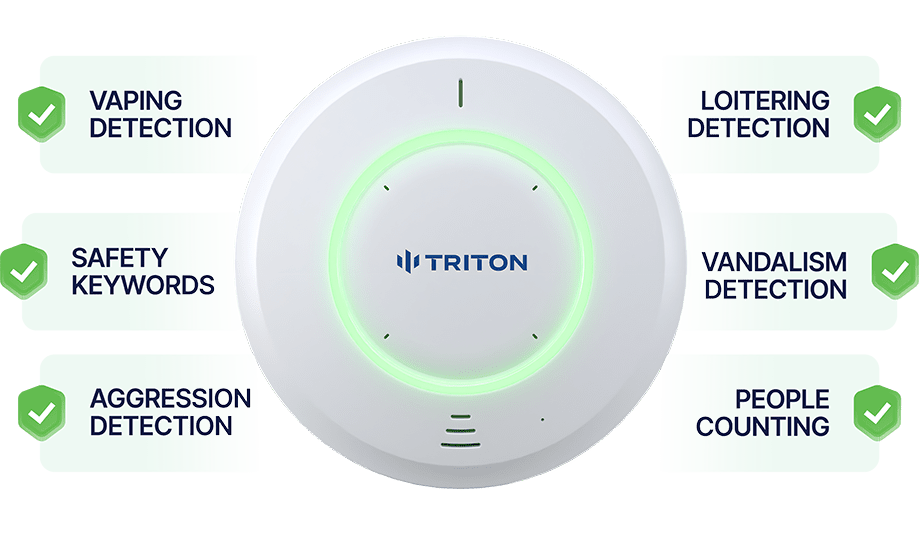Vaping has now become a quiet problem in schools, as students use e-cigarettes secretly in bathrooms or secluded corners. It poses a significant risk to safety and health. To combat this the vape detectors have emerged as vital tools, offering schools a highly sophisticated and secure method to reclaim control. Triton Sensors’ vape detectors in schools are an example of innovative technology, since they are able to combine precision, confidentiality, and multi-threats detection to ensure that learning environments are secure.
Contrary to traditional smoke alarms Triton’s vape smoke detector is designed to detect the distinct chemical signatures of nicotine and THC aerosols, ensuring the absence of false positives due to steam or other harmless particles. This is essential in school settings where disruptions are common. Vape detectors go far beyond the use of vapes, detecting those who are loitering in the crowd, a verbal assault and even threats of a critical nature like gunshots. A 10-year guarantee is included the devices can last a lifetime which makes them an excellent investment for schools navigating limited budgets.

Image credit: tritonsensors.com
What distinguishes vape detectors in schools apart is their ability to turn reactive discipline into proactive prevention. They are available 24/7 and are able to monitor areas of high risk, such as restrooms and locker rooms, sending immediate notifications to administrators using mobile apps when issues occur. This capability is real-time and allows schools to swiftly respond even before things get out of control. The Triton data reveal a disturbing fact: their system detects students who smoke every three minutes.
One of the most notable features of vape detector is its privacy-respecting occupancy monitoring. With patent-pending technology, it detects crowds and loitering with no microphones or cameras. This ensures the complete respect of privacy rights for students. rights. Triton Cloud Dashboard gives schools access to intuitive visualizations, which help them identify problems without becoming intrusive. This is particularly helpful in places where it’s difficult to monitor. It promotes safety and respects the boundaries.
The dashboard’s hotspot analysis goes the analysis to the next level, by indicating the times and locations where vaping incidents occur at their peak. This data-driven strategy allows schools to improve their response via the strategically arranged deployment of staff and resources. Triton’s reporting tools provide detailed evidence on vaping, making it possible for administrators to provide precise, quantifiable information to parents and school boards. Vape detectors in schools report dramatic drops in vaping after five weeks. The system’s deterrent and intelligence is evident.
Vape smoke detector also addresses broader safety concerns, making it a versatile guardian. It aids schools in preventing behavior problems by identifying words that are linked to aggression or bullying. The ability to detect guns is a crucial layer of security in the current era of increasing security concerns. This multi-faceted approach ensures schools aren’t merely tackling smoking cigarettes, but creating a full security net.
Triton remains popular because of its price. Despite the many advanced features offered by Triton’s features, it’s priced at a level that schools can afford and provides an alternative to installing surveillance or hiring more staff. In the long run, it can help save money due to its ability to reduce smoking and other related issues. This can lead to less disciplinary measures and healthier students.
As vaping continues to challenge schools, the vape detectors offer an opportunity to shine. They bring cutting-edge technology together with an emphasis on security and privacy, allowing educators to focus on teaching instead of police work. Triton’s vape detectors redefine what it means to maintain an environment that is safe for learning. They tackle not just vaping, but also loitering and violent behavior. The sensors are designed to help schools keep up-to-date with the constantly changing threats.
